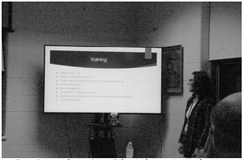Employers must take advantage of opportunities with workplace changes
Rather than attempting to put the remote-working genie back into the bottle in the post-COVID-19 world, Taylor County and other employers should look to the future and embrace new workplace realities.
Necessity, as the saying goes, is the mother of invention.
A year ago, Taylor County, like many private sector employers was firm on the line that people needed to be at their desks and working in order to do their jobs.
Then came COVID-19 and the chance that entire departments could be shut down due to illness, quarantine and contact tracing. Employers did what they do when faced with outside disruptions, they pivoted and found solutions.
Applications such as Zoom and Go To Meeting took the place of traveling to face-to-face meetings. Schedules were juggled to reduce the number of people present in an office at any given time. Offices were depopulated as workers were sent home to work from remote locations.
While flexible scheduling and remote working had been slow-moving trends in the business community, they were far from being universally adopted. We are a year into the pandemic and some workers who were sent home to work last March have not yet set foot back into the office. Some companies have entirely shut down offices in expensive urban areas and fully embraced remote working. Some managers, such as human services director Liza Daleiden, report increases in productivity due to the changes as people are more focused on their tasks at hand.
With vaccines beginning to roll out, and the light at the end of the COVID-19 tunnel appearing to be getting brighter, employers, both in the public and private sectors are faced with choices to make. This is especially important as employers plan for investments in hardware and software upgrades.
There are practical limitations to working from home and costs involved that must be taken into account. Decision makers, in both private business and government must carefully consider these costs while at the same time look at the potential longterm benefits there may be.
It is unlikely, nor is it practical or even desirable to suggest service-based industries such as government pivot entirely to working remotely. It is far more likely that the post COVID-19 workplace will be a hybrid of in-person and remote working depending on job duties, the responsibilities of the position and available technology. A hybrid model brings its own opportunities, particularly among back-office types of positions. The most notable benefits come in recruitment and retention of employees. A remote worker can be down the block or hundreds of miles away and still accomplish the same task. With the slow expansion of high speed internet in rural Wisconsin this could be a bonanza for rural communities in maintaining longterm viability. There has already been evidence of people fleeing the crush of urban living and relocating full-time to smaller communities.
Virtually everyone is impatiently awaiting the day when things can get back to normal. Employers must decide what they want that new normal to look like and make the choices that will open opportunities.





